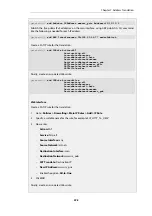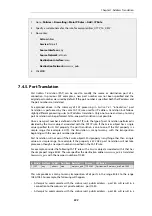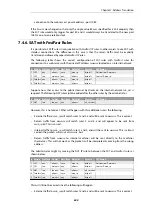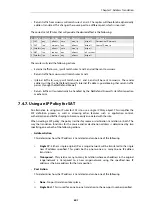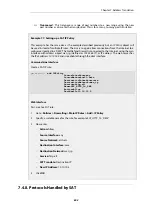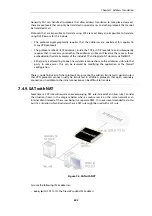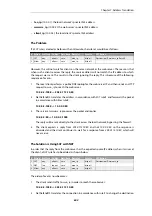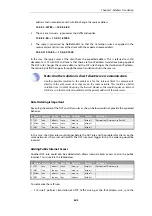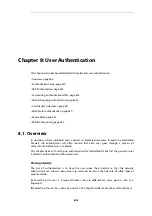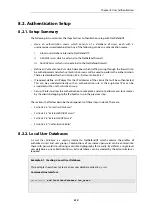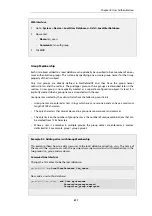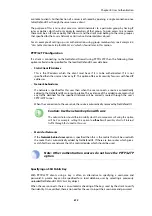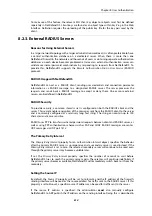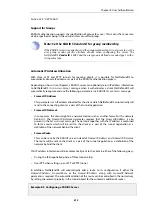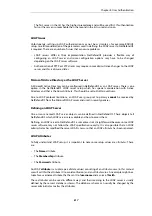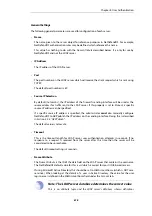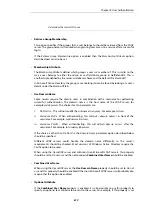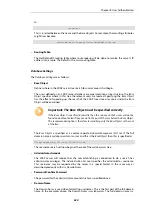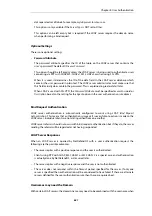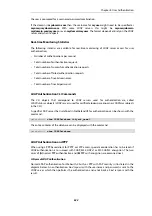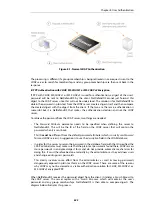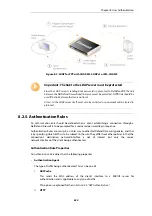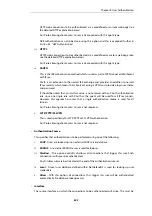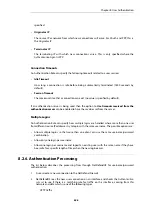
Web Interface
1.
Go to: System > Device > Local User Databases > Add > LocalUserDatabase
2.
Now enter:
•
Name: lan_users
•
Comments: lan auth group
3.
Click OK
Group Membership
Each
User
object added to a local database can optionally be specified to be a member of one or
more authentication groups. This is done by specifying one or more group names for the
Group
property of the
User
object.
Only two groups are already defined in NetDefendOS and they have the group names
administrators
and the
auditors
. The privileges given to these groups are described later in the
section. A new group is not explicitly created as a separate configuration object. Instead, it is
implicitly created when a group name is associated with the user.
Group names created by the administrator have the following constraints:
•
Group names are entered as text strings which are case sensitive and can have a maximum
length of 128 characters.
•
The only characters that cannot be used in a group name are spaces and commas.
•
The only limit on the number of group names is the number of unique combinations that can
be created from 128 characters.
•
Where a user is a member in multiple groups, the group names are entered as a comma
delimited list. For example:
group1,group2,group3
.
Example 8.2. Adding a User with Group Membership
This example shows how to add a new user to the local database called
lan_users
. The name of
the user will be
myusername
with the password
myuserpassword
and with membership in the
two groups
lan_group
and
employees
.
Command-Line Interface
Change the CLI context to be the local database:
gw-world:/> cc LocalUserDatabase lan_users
Now, add a user to this database:
gw-world:/lan_users> add User myusername
Password=myuserpassword
Groups=lan_group,employees
Chapter 8: User Authentication
611
Summary of Contents for NetDefendOS
Page 30: ...Figure 1 3 Packet Flow Schematic Part III Chapter 1 NetDefendOS Overview 30 ...
Page 32: ...Chapter 1 NetDefendOS Overview 32 ...
Page 144: ...Chapter 2 Management and Maintenance 144 ...
Page 284: ...Chapter 3 Fundamentals 284 ...
Page 392: ...Chapter 4 Routing 392 ...
Page 419: ... Host 2001 DB8 1 MAC 00 90 12 13 14 15 5 Click OK Chapter 5 DHCP Services 419 ...
Page 420: ...Chapter 5 DHCP Services 420 ...
Page 573: ...Chapter 6 Security Mechanisms 573 ...
Page 607: ...Chapter 7 Address Translation 607 ...
Page 666: ...Chapter 8 User Authentication 666 ...
Page 775: ...Chapter 9 VPN 775 ...
Page 819: ...Chapter 10 Traffic Management 819 ...
Page 842: ...Chapter 11 High Availability 842 ...
Page 866: ...Default Enabled Chapter 13 Advanced Settings 866 ...
Page 879: ...Chapter 13 Advanced Settings 879 ...


